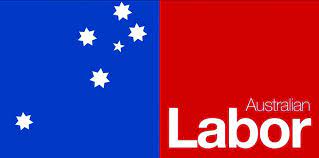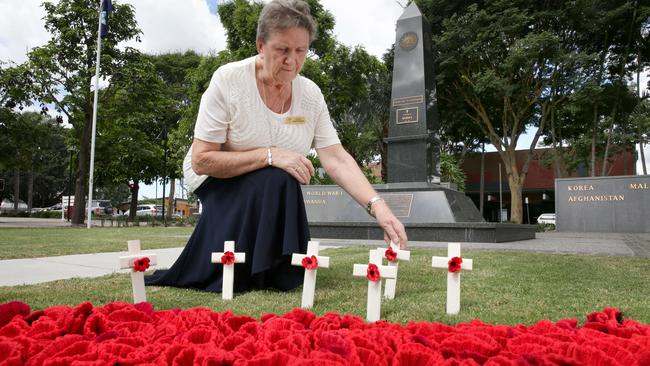
|
Vol 73 |
Page 18 |
Privacy Policy | Editorial Policy | Profit Policy | Join the Association | List of Members | Contact us | Index | Links
Back Go to page: 1 2 3 4 5 6 7 8 9 10 11 12 13 14 15 16 17 18 19 20 Forward
DVA Issues.
Contents.
ADF Transition to Civvy St booklet.
War Widow eligibility and benefits.
Labor announces Senate inquiries into the TPI Pension and DFRDB Superannuation Scheme.
Labor has established new Senate inquiries into the Totally and Permanently Incapacitated (TPI) veteran pension and the Defence Force Retirement and Death Benefits (DFRDB) military superannuation scheme.
Labor successfully moved motions to refer these matters to the Senate Foreign Affairs, Defence and Trade References Committee for inquiries with the support of the Greens and all cross-bench Senators late yesterday in the Senate. (See HERE)
The Morrison Government’s flawed 2019 reviews of the TPI payment and the accuracy of advice provided to DFRDB scheme members were a slap in the face for ex-service men and women.
Both of these reviews were announced on the eve of the last election and were cynical marketing exercises from the Prime Minister designed to placate veterans.
After raising expectations he would increase the TPI payment and sitting on the review for more than a year, Scott Morrison announced in last year’s Budget that he would not raise the pension rate and would only provide rent assistance to around 10 per cent of disabled veterans, leaving most disgusted they will miss out.
To add insult to injury, in Senate Estimates hearings in October last year, it was revealed it would be another two years before benefits began flowing while they identified eligible TPI pensioners and made changes to legislation and IT systems.
In addition, a Commonwealth Ombudsman investigation of the DFRDB scheme found Defence provided misleading advice to ADF members about their options to commute or exchange part of their pension for a lump sum, and that this constituted defective administration.
However, in its response the Government failed to provide any compensation to former defence personnel or make any changes to the scheme.
Members of the ex-service community have continued to raise longstanding concerns in relation the adequacy of the TPI pension and the historic commutation arrangements for the DFRDB scheme. They believe the Morrison Government has ignored them.

Labor has listened to these concerns and will now conduct independent Senate inquiries to allow for an open and transparent examination of these issues and to establish the facts.
Labor will work with the Senate Foreign Affairs, Defence and Trade References Committee to establish these inquiries, including Terms of Reference, to ensure it can provide thorough and comprehensive reports.
It is anticipated the inquiries will receive submissions and hold public hearings, and report back by 24 June 2021.
OPINION!
About bloody time!
The TPI Compensation payment is a special rate payable in circumstances where, because of total and permanent incapacity resulting from war service, a veteran has been unable to resume or to continue in civil employment. The special or TPI rate compensation was designed for severely disabled veterans of a relatively young age who could never go back to work and could never hope to support themselves or their families or put away money for their old age. Numerous investigations into the TPI compensation debacle have shown the current level to be inadequate. At present there are about 29,500 mainly aged men and women classified as TPI in Australia. The average age of a TPI person is around 70 and this number is slowly decreasing due to deaths and it is estimated there will be about 17,500 TPI recipients in 2030.
As of the 20th March, all receive a tax free compensation payment of $1,464.70 per fortnight. According to the Bureau of Statistics, the average weekly wage for full time employees is $1,463 (See HERE) – when taxation is taken into account, the TPI compensation is a bit more than half the average weekly wage. Granted TPIs receive other benefits such as free medical/dental, cheaper car purchase and maintenance costs, etc, but these do not pay the bills nor put bread on the table.
Over the years there have been numerous reviews commenting on the TPI payment since it was introduced in 1920. The most recent review to comment on the TPI payment level was the Productivity Commission report – A Better Way to Support Veterans, released on the 4th July 2019. It found that there was no compelling case for an increase in the TPI payment and that the overall package of compensation for TPI veterans was reasonable.
However, the TPI Federation points out that the TPI payment has decreased relatively over time. (See HERE). It says the AGR (notional ‘economic loss’) component of the TPI payment should be increased to be the same as after tax National Minimal Wage (NMW). It should also be benchmarked or indexed in a way that maintains this value over time. The rationale for after tax NMW is that had the veteran not become unable to work because of their ADF service, this is the minimum amount that they would have been earning. The TPI Federation estimates an increase to after tax NMW would see the TPI veteran receive about $9,500 extra per year (or about $365 per fortnight). The TPI Federation cites an unpublished 2017 costing from the Parliamentary Budget Office as giving a cost of $240million in the first year.

When you consider the amount of money that has been spent over the past 12 months, one way or the other, this is chicken feed, yet these men and women are in a situation of being injured and not able to earn a living as a result of their putting their lives at risk defending this country.
They haven’t suffered due to a flood or a bush fire or a health pandemic – they have suffered because they put their lives at risk defending this country!!
One wonders why this Government, and in fairness previous Governments, thinks so lightly of the men and women who have been injured as a result of being sent to war. Politicians from Governments of all persuasion are only too willing to strut their stuff with fit and able ADF personnel when there is a benefit in it for them, but when it comes to looking after those same men and women who have been injured as a result of being sent to a war by these same politicians, they are nowhere to be seen.
Perhaps it’s because there are more votes in looking after bush fire or flood victims that there is in caring for injured returned service men and women. They are only a small voting block – so bugger them!
Remember, it’s not DVA that makes these rules, so don’t take it out on them. It’s the Government. There are only two ways to change them, lobby the Government to change them – or change the Government.
We can only hope this latest Senate Review will uncover the truth and bring some sanity and humanity into the way TPIs are treated. tb.
War is God’s way of teaching Americans geography.
War Widows.
Another group of people who have not been well catered for by successive Governments are the War Widows. By definition, War Widows are usually elderly men or women who have stuck with and cared for their injured returned ex-service husbands, wives or partners, who, as a result of their war caused injuries, have been classified as TPIs and who have since died. While alive, the TPI brought into the household his/her compensation payment of $1,464.70 per fortnight (as at March 2021), yet on his/her death, the Government has decreed that the Widow now only needs $968.90 per fortnight or about two thirds (⅔) of that amount on which to live.
As far as the Government is concerned, upon the TPI’s death, household maintenance costs, food, clothing and services all automatically and mysteriously reduce by a third. The surviving partner has spent, sometimes, years caring for his/her TPI partner, who in a lot of instances, can be severely handicapped, either physically and/or emotionally and as a result has required constant attention. As a carer, the Widow received the paltry sum of $131.90 per fortnight, but that is taken from him/her on the Veteran’s death. The surviving partner has had to live and suffer a carer’s life not of his or her choosing but because of the war-time military service required of his/her partner by the Government.
War time Military service affects both of them equally.

The surviving partner of a TPI does receive a Gold Card in his/her name entitling him/her to health care (all conditions) and may receive other benefits such the Energy Supplement and public transport concessions, however these benefits are also available to all pensioners so there is no conditional benefit there.
One wonders what is the rationale in reducing the TPI compensation payment to the surviving partner once the TPI has died? Usually the survivor is elderly, is not able to supplement their income by working but now has to suffer the double despondency of losing their loved one and having to worry how he/she was going to survive financially.
In order that the remaining partner can live out his/her remaining years in comfort and without financial worries, the War Widow Compensation payment should be equal to TPI Compensation payment. All benefits should automatically flow onto the Widow upon the TPI’s passing.
Currently there are 46,828 War Widows in Australia, most of whom are female. One would hope the reason the current War Widow compensation payment of ⅔ of the (mainly male) TPI compensation payment is not just because they are female!!
If you live to be one hundred, you’ve got it made. Very few people die past that age.
Rent Assistance.
The maximum fortnightly rate of rent assistance payable to service pensioners differs depending on a number of factors. Rent assistance is an allowance which may be paid to a service pensioner or income support supplement recipient, to assist in meeting the cost of rental accommodation. To receive this assistance, a pensioner must be paying rent, (other than Government rent) for accommodation in Australia and the amount paid must exceed a certain threshold.

Unfortunately, the method of calculating the amount of rent assistance received is very complicated (see HERE) and is worked out by determining the minimum rent a person must pay before they can receive any rent assistance. This is called the “Rent Threshold”. It is also dependant on the pensioner’s family situation. Where a person's rental payments are greater than the threshold relevant to the person's family situation, rent assistance is paid at the rate of 75 cents for every dollar of rent paid in excess of that threshold up to the maximum rate applicable to the person. It is also means tested.
The maximum amount of rent assistance you can receive depends on whether you are single or a member of a couple. The maximum fortnightly amounts of rent assistance are:
-
Singles rate - $140.80
-
Couples rate (combined) - $132.80
Each partner receives half the Partnered (combined) rate.
At present Veterans receiving a Disability Pension have that pension included in their income test but from the 20th September 2022, that portion of income will be removed from the income test. Whether this will be beneficial to a pensioner remains to be seen as DVA will then discontinue the Defence Force Income Support Allowance.
Because of its complexity, if you think you qualify for rent assistance, contact DVA and tell them your rental situation and the amount of rent you pay per fortnight. They will work it out for you.
The surest sign that intelligent life exists elsewhere in the universe
is that it has never tried to contact us.
War Widow Eligibility and Benefits.
We get a lot of emails from people asking if/when/how they are eligible to be classified as War Widows and receive the War Widows Pension (now officially called the Widow's/Widower's Pension). In order to give the correct answer, we asked Greg Russell from the Kedron Wavell RSL Sub-Branch for help. Greg is one of Queensland’s most knowledgeable Veteran’s Advocates and he and his team are available to help, by appointment, at the RSL Sub-Branch offices situated on the first floor of the Kedron Wavell Services Club in Chermside (Qld).
VEA, MRCA, SRCA.
Unfortunately, there are three acts of Parliament that determine how DVA cares for a veteran or for a veteran’s widow, one is the Veterans Entitlement Act (VEA), another is the Military Rehabilitation and Compensation Act (MRCA) and there is also the Safety, Rehabilitation and Compensation Act 1988 (SRCA), but now called the Defence-related Claims Act of 1988 (DRCA). An earlier story showed how each Act affects funeral benefits paid to a widow – see HERE.
You have to wonder why there are so many - why wouldn’t a subsequent act override and supersede all previous acts. It’s like saying all persons who obtained a driver’s licence from 1945 to 1980 can drive Holdens, those with licenses obtained from 1980 to 2000 can drive Falcons and if you obtained your license after 2000 you can drive Toyotas. It’s crazy.
The VEA is the Act that governs how a widow of a serving veteran is determined. A widow is eligible for War Widow classification if his/her partner had eligible service covered by the VEA and:
-
has had death determined as war-caused or defence-caused, or
-
died as a result of an injury or disease which is accepted as war-caused or defence-caused, or
-
had been receiving:
-
an Extreme Disablement Adjustment,
-
a disability pension at the Special Rate (T&PI)], or
-
a disability pension at the Temporary Special Rate, or
-
a disability pension at the Intermediate Rate, or
-
a disability pension, at an increased rate due to being a double amputee or blinded, or had been a former Australian prisoner of war.
-
Benefits that a War Widow is entitled to include:
-
A tax-free and free of an income test pension for life. The payment is classified as income for social security purposes.
-
A DVA health care Gold Card (all conditions).
-
An allowance to cover funeral costs. This is explained HERE.
-
An Income Support Supplement (ISS). ISS provides a regular income in addition to the War Widow's pension for Australian War Widows with limited means. This payment is subject an income or assets test and the Widow must live in Australia.
The income limits (as at March 2021) when determining a Widows eligibility for ISS are:
-
If the widow is still single = $1,481.60 per fortnight.
-
If the widow has a new partner = $1,998.80 per fortnight (combined).
As the War Widow pension is also classified as income it will have a bearing on the amount of ISS paid to the Widow. As an example:
A single War Widow receives income of $545.10 per fortnight from sources other than his/her DVA pensions. For ISS purposes, his/her income per fortnight is $545.10 plus $954.70 (the War Widow’s pension), which totals $1,485.60 per fortnight. Because his/her income is more than $1,481.60 per fortnight (the singles income free area for ISS), his/her ISS will be paid at a reduced rate. His/her income exceeds the limit by $4.00, which means the ISS will be reduced by $2.00 per fortnight, ($4.00 X 0.50).
ISS is also dependant on an Assets test. If the Widow owns his/her own home, the test does not include the value of the home. There are two limits and two categories, two for a single Widow and another two for a re-partnered Widow. As the private home is not included, non-home owners can have a higher value of assets. They are:
|
|
Home owners |
Non home owners |
|
Singles |
$485,500 |
$700,000 |
|
Couples (Combined) |
$682,000 |
$896,500 |
ISS is reduced by 75 cents for every $250 over the limit, the amount of reduction for a single home owner widow is calculated as follows:
|
Step |
Action |
|
1 |
Work out the amount that is above the asset value limit $491,500 - $485,500 = $6,000 |
|
2 |
Divide the amount that is above the limit by $250 $6,000 ÷ $250 = $24.00 |
|
3 |
Multiply this amount by 0.75 to get the pension reduction $24.00 x $0.75 = $18.00 |
Assets that are and are not counted can be found HERE.
When working out the amount of ISS which will be paid to the Widow, both income and assets tests are taken into account and the one that reduces the level of ISS the most is the one that is used.
Since May 1984, should a War Widow re-marry, he/she will continue to receive the War Widow’s compensation pension and it will be paid until the widow dies.
One thing is for sure, you nearly have to be a Superman to understand DVA the way the Government has set it up. To find anything you have to chase links all over the place. Don’t try to understand or sort it out yourself. Get help. There are trained Veterans Advocates at most RSL Sub-Branches who have an understanding of the way it works.
Make an appointment and go and see one.

ADF Grey Card.
If you served in the ADF and were transferred to the Non-working reserve or if you served for a period of 18 years or more, or if you discharged earlier due to any of the following:
-
Compulsory retirement age.
-
Medically unfit to continue service.
-
Management-initiated early retirement.
-
To meet the needs of the Service (ie: declared redundant).
You are entitled to apply to the ADF for a Grey Card. The Grey Card is an Identity Card and will make it easier for you to access Defence establishments.
You can get information on the Card HERE.
ADF Transition Handbook.
The ADF has produced a Transition Handbook which is a guide to assist Australian Defence Force (ADF) members and their families to prepare for separation from the ADF. It is important to acknowledge and plan for the changes that will occur both during, and after separation. The ADF Transition Handbook identifies and provides information on issues that may affect separating ADF members and their families, including Defence requirements and other support services provided by Government agencies and Ex Service Organisations. Early planning and preparation will assist a successful transition from military to civilian life.
Although this handbook might be a bit late for most of us, you could know someone who it would benefit.
You can get a copy of it HERE.
Back Go to page: 1 2 3 4 5 6 7 8 9 10 11 12 13 14 15 16 17 18 19 20 Forward